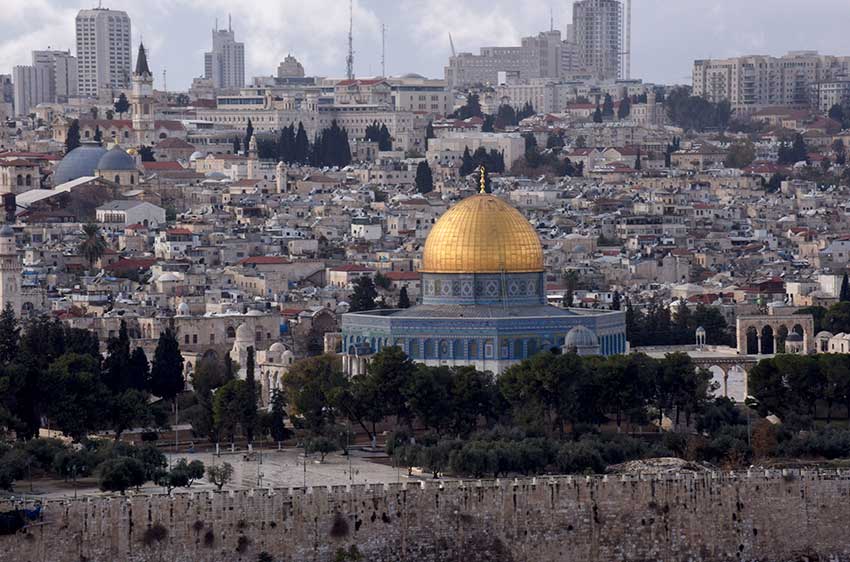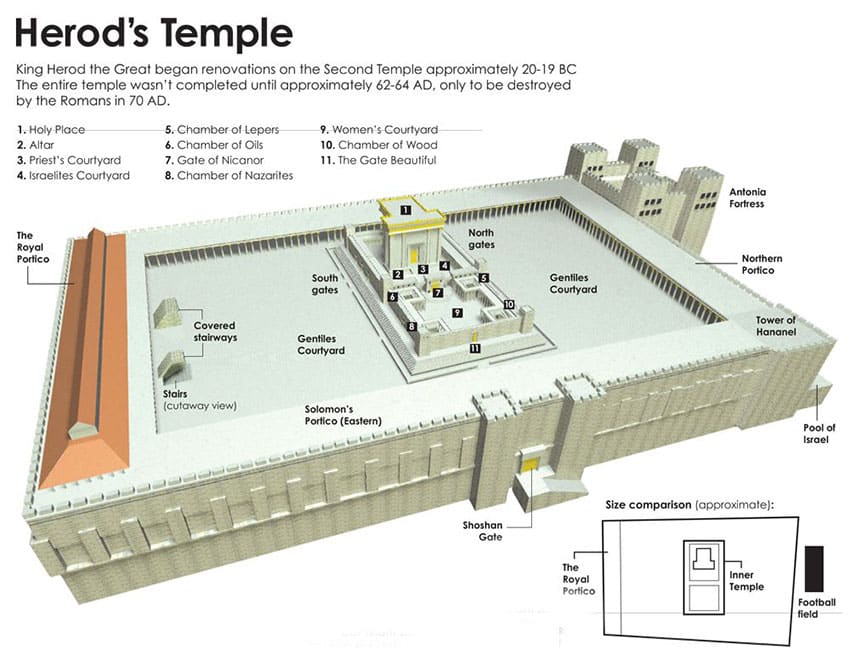
Photo: CNS, Debbie Hill
Dear Father, A Jewish friend told me a curious story about a thread which changed colour if the sacrifice for atonement offered in the Temple in Jerusalem was accepted by God, and it stopped changing colour around the year when Christ died on the cross. Is this true?
Roy Schoeman, a brilliant Jewish convert to the Catholic faith, relates the story in his book Salvation is from the Jews and it is based on early Jewish writings.
From the time of Moses, animal sacrifices were offered daily, first in the Tabernacle or Tent of Meeting, and then in the Temple in Jerusalem. These sacrifices could not atone adequately for the sins of mankind. But when Christ, the Son of God, died on the cross, his sacrifice, offered once and for all, did atone adequately. The Letter to the Hebrews explains that “the priests go continually into the outer tent, performing their ritual duties; but into the second only the high priest goes, and he but once a year; and not without taking blood which he offers for himself and for the errors of the people … According to this arrangement, gifts and sacrifices are offered which cannot perfect the conscience of the worshipper … But when Christ appeared as a high priest of the good things that have come, then through the greater and more perfect tent (not made with hands, that is, not of this creation) he entered once for all into the Holy Place, taking not the blood of goats and calves but his own blood, thus securing an eternal redemption” (Heb 9:6-11).
Two early Jewish documents, the Talmud, a collection of writings that cover the full gamut of Jewish law and tradition compiled between the third and sixth centuries, and the Zohar, an early mystical commentary on the Torah, the first five books of the Old Testament, relate the account of the scarlet thread. They explain how the High Priest would enter the Holy of Holies in the Temple once a year on the Day of Atonement (Yom Kippur) to offer sacrifice for the atonement of the sins of all Israel, and that a scarlet thread would miraculously turn white as a sign that God had accepted the sacrifice. The Zohar records that the people “used to know by a certain thread of scarlet if the priest had been successful … [I]t was known by the thread changing its colour to white, when there was rejoicing above and below. If it did not, however, all were distressed, knowing that their prayer had not been accepted”. This custom reflected the words of Isaiah: “Though your sins are like scarlet, they shall be as white as snow” (Is 1:18).

The Talmud relates that 40 years before the Temple was destroyed, by Titus in the year 70 AD, the miracle of the thread changing colour stopped happening: “Originally they used to fasten the thread of scarlet on the door of the [Temple] court on the outside. If it turned white the people used to rejoice, and if it did not turn white they were sad … For 40 years before the destruction of the Temple the thread of scarlet never turned white but it remained red” (Rosh Hashanah 31b).
Christ’s death on Mount Calvary took place around the year 30 AD, or 40 years before the destruction of the Temple. His death was the means of atonement for the sins of all mankind, and it was totally acceptable to God. With his death the need for daily sacrifices of animals in the Temple, and the yearly sacrifice of atonement on Yom Kippur, came to an end, replaced by the one and only sacrifice of Christ, which is made present in the Mass.
We should remember too that at the moment of Christ’s death on Mount Calvary, the curtain in the Temple at the entrance to the Holy of Holies was torn in two from top to bottom, symbolising the end of the Old Covenant, with its sacrifices of animals, and the beginning of the New Covenant, with the sacrifice of Christ (cf. Mt 27:51).
One can also see in the tearing of the curtain the opening of heaven, represented by the Holy of Holies. Heaven had been closed ever since the original sin of Adam and Eve, and now it was opened for all who deserved to go there. It is interesting to note too that Christ’s final words on the Cross, “It is finished”, or Kalah in Aramaic, (cf. Jn 19:30) were the same that the High Priest would say when they had finished slaughtering the last lamb for the Passover to be celebrated. With those words, the Old Covenant was finished and the New had begun.
